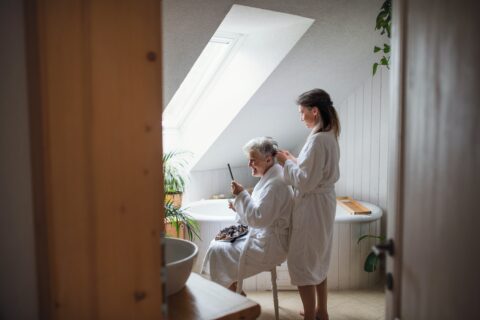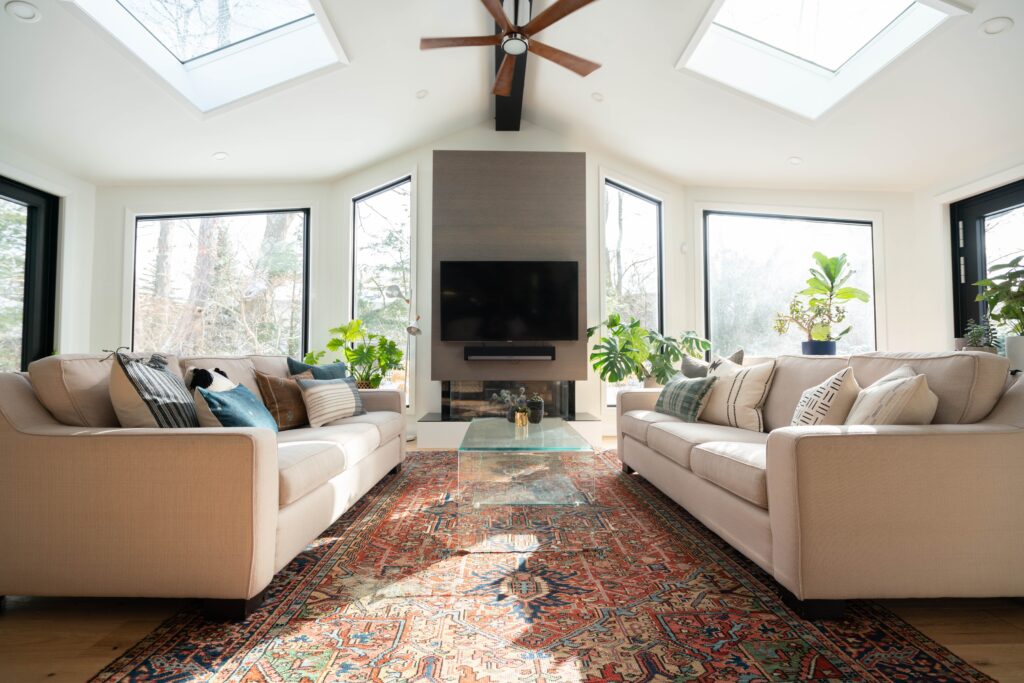All homes need natural light; it’s simply wonderful bringing the outdoors in; plus, having natural light in your space will also boost its aesthetics. While many opt for windows to bring in natural lighting, more homeowners opt for something a little bit different, the skylights. Skylights are an excellent way to bring natural light into your home and make your space feel brighter and more inviting. But before you install one, there are certain things you need to consider. From the type of skylight that’s right for your home to the risks associated with installing one, this blog post is here to help you make an informed decision about whether or not a skylight is a right choice for you.
What Are Skylights?
Skylights are windows typically installed on the roof of a building that allows natural light from outside to enter the interior of a structure. There are several different types of skylights available, ranging from fixed skylights (which do not open) to venting skylights (which can be opened). Fixed skylights provide the most natural light, but they do not allow any ventilation into the room. Venting skylights can be opened slightly or completely depending on what airflow you want.

Benefits of Installing a Skylight
Installing a skylight in your home has many potential benefits, such as increasing natural light levels in dark rooms or hallways and reducing energy costs by letting in more daylight which reduces reliance on artificial lighting during daytime hours. Additionally, choose a venting model. It can provide additional ventilation, which can help improve air quality inside your home by reducing humidity levels and removing odors and allergens from the air.

Things To Consider Before Installing A Skylight
Before installing a skylight in your home, several factors should be taken into consideration, such as assessing whether or not there will be enough room for it in your roof’s existing framing and determining what type of roof construction is necessary for installation (such as rafters or trusses). Additionally, it’s important to determine what type of glazing material will be used (such as glass or acrylic), as this can impact how much heat enters through it during the hot summer months. Finally, it’s important to check local building codes and permits that may apply when installing a new window onto your roofline.
How To Install A Skylight
Once all considerations have been made and a permit obtained if required, the installation itself is relatively straightforward. First, ensure that all safety precautions are taken, such as covering furniture and wearing protective clothing while working on top of the roof structure. Next, measure out where the window will go using a chalk line or leveler tool; then, cut out the appropriate size hole using a saws-all/roto zip tool according to the manufacturer’s instructions.
After that, attach mounting brackets around the opening; then slide flashing around edges followed by the actual window frame itself; finally, caulk joints with weatherproof sealant and screw frame into place after ensuring everything fits snugly together according to manufacturer’s instructions again!
Maintenance And Care For Your Skylight
After the installation has been completed, it’s essential to inspect it regularly for any signs of damage due to weather conditions, such as cracking caulking seals near joints, etc. If any repairs are needed due to water leakage or damage, contact the local contractor immediately so they can assess the situation properly before further problems occur! Plus, you’ll need to keep the surrounding area clean from leaves/debris buildup, so rainwater doesn’t accumulate around the base, which could cause water infiltration into the house over time if left unchecked! Finally, if possible, use specially formulated cleaning products designed specifically for these types of windows every six months or so, depending on the amount of outdoor usage or exposure elements!
Are There Any Risks Associated With Installing A Skylight In Your Home?
Although installing a skylight can be beneficial, there are also potential risks associated with them, such as leakage if improper sealing techniques were used during the installation process OR condensation buildup inside due to high humidity levels being trapped within the unit itself, leading possibly mildew growth over time without proper maintenance routine being followed regularly (i.e., wiping down surfaces w/damp cloth regularly ). To minimize these risks, make sure the contractor is experienced & certified when performing the installation job & uses the highest grade materials available when doing work yourself too!
How To Choose The Best Skylight For Your Home
When choosing the best skylight for your home, there are several factors you should think about first– size must correspond appropriately to the opening space, have available roof framing & glazing material should meet desired performance requirements too (i.e., Low-E coatings reduce UV radiation entering interior space w/o sacrificing visibility outside!)
Also, look for products that come with extended warranties against defects manufacturing & installation process, so you won’t be stuck paying for costly repairs later on. Finally, research online finds a reputable dealer who sells a product that wants to ensure getting the best deal possible fitting within budget constraints set out initially before starting the project!!
Is a Skylight Right for Your Home?
By now, you should have some idea why installing a skylight might be something worth considering for your home– including potential benefits & risks associated with having one installed along with tips for selecting the best unit based on particular needs have determined previously– but always consult a local expert before a beginning project just case unforeseen issues arise!!
If you are located in Snohomish county, King County, or Skagit county, and you are looking to add more warmth and character to your home by installing a skylight, fill out the contact form by clicking HERE or by giving us a call at (425) 382-8355.



